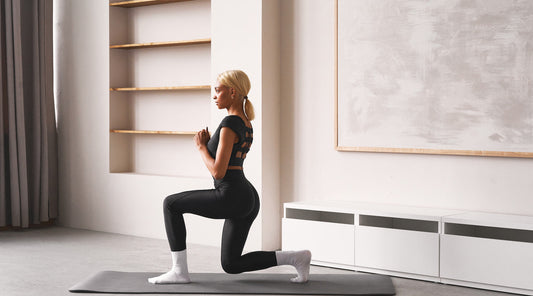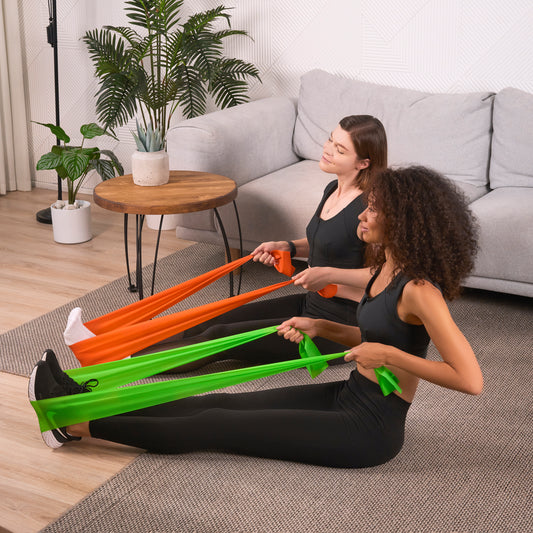Posture is typically the last thing on your mind, whether waiting to board a plane or just relaxing at an airport terminal. However, considering how physically taxing flying can be, even in the best of circumstances, it's surprising that we don't pay more attention to how to maintain good posture on a long flight.
Everyone has experienced a crick in their neck when they wake up after a nap on a flight or sore shoulders from carrying heavy bags. Poor long flight posture can worsen pre-existing diseases and produce a variety of long-term health problems in addition to the immediate discomfort it causes.
Maintaining proper long haul flight posture is essential since it eases muscle strain and provides spinal support. Practicing good posture can help you avoid pain, exhaustion, and possible long-term problems, whether sitting for extended periods in an airplane or standing in lengthy lines.
Prioritizing your posture when traveling will help you reduce the stress on your joints and muscles, making the trip more pleasant and pleasurable. We’ve prepared a range of essential posture tips for long haul flights to make your journey an unforgettable experience.
Why Posture Matters During Long-Haul Flights
On long-haul flights, posture is crucial since sitting in close quarters for extended periods can strain your spine, muscles, and joints. Back pain, stiffness, and an increased risk of deep vein thrombosis (DVT) due to poor circulation can result from bad airplane seat posture.
In-flight comfort is achieved by maintaining proper posture, preventing stiffness, lowering the risk of aches and pains, improving circulation, and enhancing digestion, breathing, and general energy levels.
Common Postural Problems While Flying
Neck Strain and Head Support Issues
The lack of head support in most airline seats makes neck discomfort a prevalent postural issue during lengthy trips. Long periods spent sitting with your head up or cocked forward can strain your neck muscles, which can be painful and uncomfortable.
If you fall asleep in an uncomfortable position, this may worsen. Using a headrest or neck pillow to support your neck's natural curve can give neck and back relief, improve alignment, and lower your chance of developing neck pain.
Lower Back Pain from Poor Seat Ergonomics
Airline seats can cause the lower back to droop or remain unsupported for prolonged periods due to insufficient lumbar support. This can lead to muscle fatigue, stiffness, and discomfort.
Consider using a small lumbar pillow or cushion for extra support, move your seat as much as possible, and take frequent movement breaks to stand and stretch throughout the flight to help ease lower back pain.
Leg Stiffness and Circulation Problems
Muscle tightness and blood flow restriction brought on by immobility can result in pain, oedema, and even a higher risk of deep vein thrombosis. Stretching frequently, moving about when you can, and doing easy leg exercises like ankle rolls and toe taps while seated will all help to increase circulation and lessen stiffness. Maintaining enough circulation is another benefit of being hydrated.

Best Posture Tips for Long Flights
Knowing the locations of the closest emergency exits is only one aspect of air safety. Maintaining proper posture is also important for pain-free flying. Here are some practical travel posture tips on the plane:
Adjust your seat. Maintain a neutral spine position and ease pressure on your lower back by reclining a little. Take care of the seating alignment.
- Move regularly. Every one to two hours, take a walk, stretch, and stand up to increase circulation and avoid stiffness.
- Sit upright. Avoid slouching to relieve strain on your neck and back, keep your shoulders back, and keep your head in line with your spine. Take your best posture for long flights.
- Use a neck pillow. Take a travel pillow to support your head and neck for better alignment and to avoid neck pain.
- Leg exercises. Sitting exercises that increase blood flow and decrease leg stiffness include knee raises and ankle rolls.
- Wear a posture corrector. Think about utilizing a handheld posture correcting bra to help you stay in alignment and prevent slouching when flying.
- Hydrate. Stay hydrated to help keep your circulation going and avoid oedema.
Following these suggestions, which include utilizing a corrective bra like Etalon for posture adjustments, may lessen discomfort and make for a more comfortable trip.
Movement and Exercises to Reduce Stiffness
Consider doing easy exercises like neck stretches, seated spinal twists, and shoulder rolls on the journey. By promoting blood circulation and relieving muscle tension, these exercises can mitigate the negative consequences of extended sitting.
You may prevent muscular tightness and increase flexibility by stretching your calves, quadriceps, and hamstrings. To keep the spine mobile and open up the chest, include mild side and back stretches.
Preventing Neck and Back Pain While Flying
Knowing how to avoid neck and back pain when flying is one more essential element of a successful journey on the plane.
Packing Smart: Travel Light to Reduce Strain
Overpacking is most likely the cause of your suitcase bulging at the seams. Carrying a single large load throws your body off balance, which is the problem. Try packing as little as possible, or split your belongings between two smaller suitcases and inspect one of them.
Proper Lifting Techniques for Carry-On Bags
To prevent back discomfort when lifting carry-on bags, bending at the knees instead of the waist is crucial. Raise the bag using your legs to maintain a straight back and an elevated chest. Holding the bag close to your body will lessen your arms and spine strain.
Lifting or placing the bag aloft requires turning your full body rather than twisting it. Lift the bag slowly and evenly with both hands, especially if it is heavy. Your body will experience less strain and injury thanks to these strategies.
Hydration, Nutrition, and Their Role in Posture
Drinking enough water keeps your muscles functioning properly and keeps the discs in your spine lubricated, which helps avoid stiffness and pain. Dehydration can affect posture, which can cause muscle cramps and decreased flexibility.
Strong posture is maintained by preserving bone health and muscle function, supported nutritionally by a balanced diet high in calcium, vitamin D, and magnesium.
Proteins also aid in muscle growth and repair, and meals that lower inflammation can ease joint and muscle pain. Hydration and nutrition promote better posture, reduced strain, and better alignment.
Final Checklist for a Comfortable Flight
- Dress comfortably. Wear loose, breathable clothing and supportive shoes to stay comfortable throughout the flight.
- Essentials to pack. Bring a posture corrector, lumbar support, and neck pillow.
- Move frequently. Every one to two hours, stand and stretch.
- Keep yourself hydrated. Avoid dehydration, which can cause stiffness and discomfort, by drinking lots of water.
- Lift properly. Use correct lifting techniques for your carry-on.
This checklist will help you stay relaxed and less uncomfortable during your flight.
Conclusion
By adhering to these easy recommendations and keeping your posture straight during your flight, you may lessen discomfort, increase blood flow, and greatly enhance your vacation experience. Long-haul travel may be comfortable and healthy with a little planning and attention to detail.
FAQs
What is the best posture for long-haul flights?
How can I avoid neck and back pain when flying?
Are travel pillows effective for posture support?
How often should I move during a long flight?
Can stretching help prevent discomfort on long flights?
Trending
Try Etalon posture improvement products










